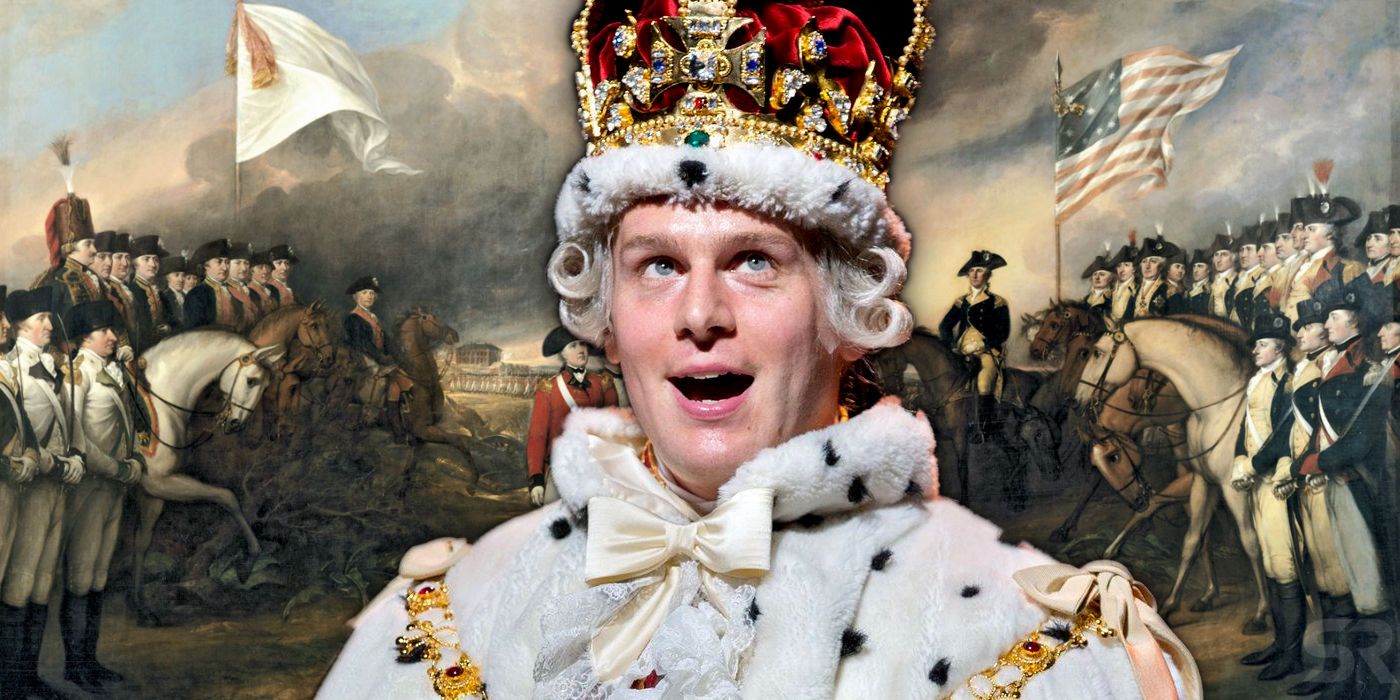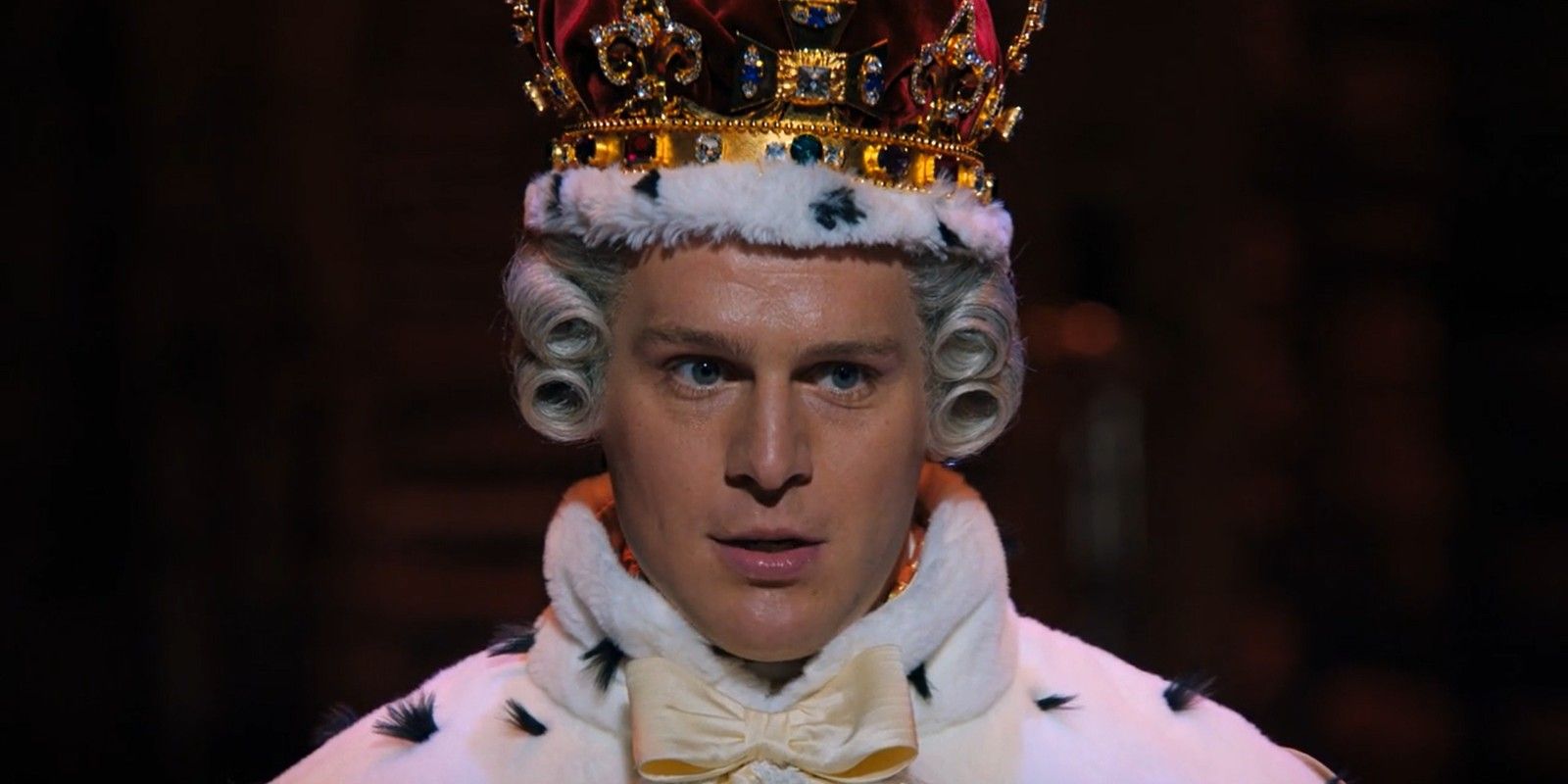In Disney+'s Hamilton, King George III is depicted as somewhat of a sore loser, but in reality, his reaction to Britain losing the American Revolutionary War was calmer and friendlier than people may realize. Portrayed with electricity and a touch of madness by Jonathan Groff, the creators of Hamilton have crafted a caricature-esque version of the monarch who looms in the shadows of the show’s primary storyline, popping in only a handful of times to deliver a uniquely British perspective on the unfolding events. The real King George III’s reaction to the American Revolution and his eventual defeat has been particularly difficult to decipher – that is, until recent findings.
The life of King George was certainly an eventful one and a turning point for British influence and history. In the King’s second song in Hamilton, “What Comes Next,” which takes place shortly after the British defeat at the Battle of Yorktown, he croons to his lost colonies, “You cheat with the French, now I’m fighting with France and with Spain.” In addition to their troubles with the rebelling American colonies, the British Empire was indeed also engaged in entanglements with France and Spain, as well as continuing the empire’s expansion in Asia. With so much activity within the government and the risk of losing much of its previously expanding empire looming, it became clear the British would need to put aside their differences with their previous American subjects in order to survive.
After General Cornwallis’ defeat at the Battle of Yorktown, King George lost the support of Parliament, the final blow dealt with the resignation of the loyal Prime Minister Frederick North. Overcome with the loss, George went so far as to draft a notice for his abdication of the throne, which was ultimately undelivered. Soon after, King George began negotiating peace agreements, formalized in the Treaty of Paris in 1782, officially ending the war and recognizing American Independence. The following year, Britain restored Florida back to Spain and agreed to return taken colonies to France. After peace had been brokered, John Adams (who is mentioned in Hamilton as the “little man” who talked to King George), served as the Minister to London and took audience with the monarch in 1785, ultimately establishing a political friendship between the two nations.
When Adams visited London after the war, King George is quoted as admitting, “I was the last to consent to the separation; but the separation having been made and having become inevitable, I have always said, as I say now, that I would be the first to meet the friendship of the United States as an independent power." This acceptance is a far throw from earlier words attributed to the king only a few years earlier, describing “vigorous” measures in order bring the Americans to “due submission.”
Recent efforts have been made to help understand the political philosophies of King George III (and his contemporaries), largely through the Georgian Papers Programme, an initiative which has begun digitizing documents of the era from the Royal Archives. One document, recently discovered and titled America is Lost!, gives historians new access to the king’s aims in the wake of defeat. Though the essay is attributed to King George, British agriculturalist Arthur Young wrote the original draft with amendments and omissions made throughout by the ruler, changing some of the piece’s tone and focus. One such notable change revolves around the predicted future of the newly formed United States. King George omits instances where Young pessimistically describes an America unable to sustain itself without British control, and instead, highlights the necessity of preserving the country, even at the cost of its other territories.
These discoveries help to paint a picture of a ruler, once quick to anger, eventually taking a step back after his defeat, reassessing the terrain, and making pragmatic, informed decisions. While the musical Hamilton portrays King George III as a somewhat petulant and cartoonish figure, much of the character’s nuance has been muddled by time. With the continued work done with the digitization of the Royal Archives and the Georgian Papers, there will surely be more information and perspective from everyone’s favorite spitting British monarch.


